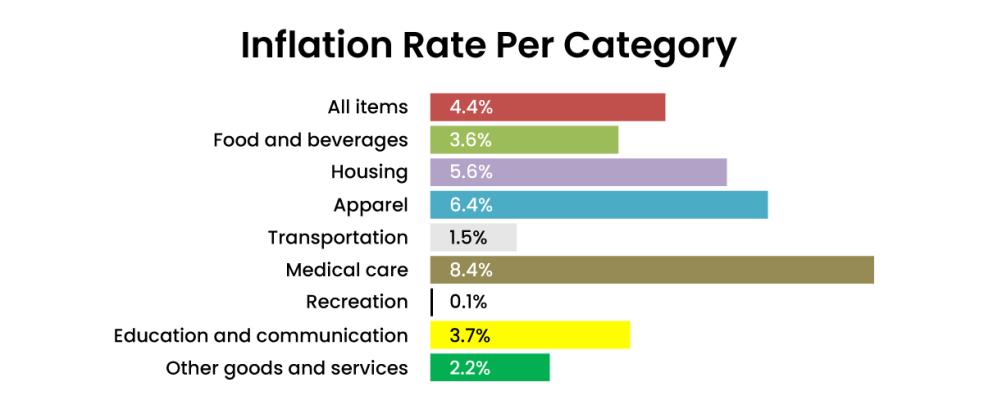
The rate is calculated based on the local Consumer Price Index (CPI), which shows changes in prices for major consumer goods and services in Humboldt County, from the price of eggs and meat to housing, and helps calculate the local inflation rate.
For comparison, the statewide inflation rate is 3.3% from February 2024 to 2025, according to the State of California Department of Industrial Relations. It’s important to note that the statewide rate measures what consumers pay for goods in urban centers, like San Francisco, Los Angeles, and San Diego. Nationwide, the inflation rate was 2.3% as of April 2025, according to the US Bureau of Labor Statistics (BLS), which tracks tens of thousands of goods nationally.
Notably, the local CPI was calculated using the price of more than 500 products, whereas the national CPI gathers price information on more than 60,000. This can contribute to a “nosier” inflation rate here in Humboldt, says Erick Eschker, chair of the Economics department and director of the Humboldt Economic Index.
Rural communities can experience higher inflation rates for several reasons, ranging from increased transportation costs to limited competition and more susceptibility to supply chain disruptions.
“State and national inflation rates typically focus only on prices in urban areas—but millions of Californians live in rural regions,” says Eschker. “Humboldt students are helping to fill that gap by tracking local price changes, gaining real-world experience in their field, and building stronger connections with the community. It’s also creating greater awareness about how economic shifts uniquely affect rural households.”
The CPI revealed rising costs across categories. According to the data:
- Medical care: 8.4% (highest increase)
- Apparel: 6.4%
- Housing: 5.6%
- Education and communication: 3.7%
- Food and beverages: 3.6%
- Other goods and services: 2.2%
- Transportation: 1.5%
- Recreation: 0.1% (lowest increase)
For the first time, students added cannabis prices to the CPI, collecting price data on a limited number of items in product categories such as flower, concentrates (hash), edibles, and pre-rolls. Overall, cannabis prices rose a very small 0.2% on average, according to the index.
The research is part of the annual CPI report created by the Cal Poly Humboldt Economics department. Since 2013, students have gathered hundreds of local prices each spring in order to calculate the local inflation rate.
Last year, researchers expanded the study, collecting prices from 287 goods and services to 529. By doing so, they were able to provide data that was more accurate and consistent with the BLS’s CPI.
The data, Eschker explains, is more than just a tool to track what consumers are paying for goods and services over time—it helps deepen insight into the community and the unique economic trends it faces.